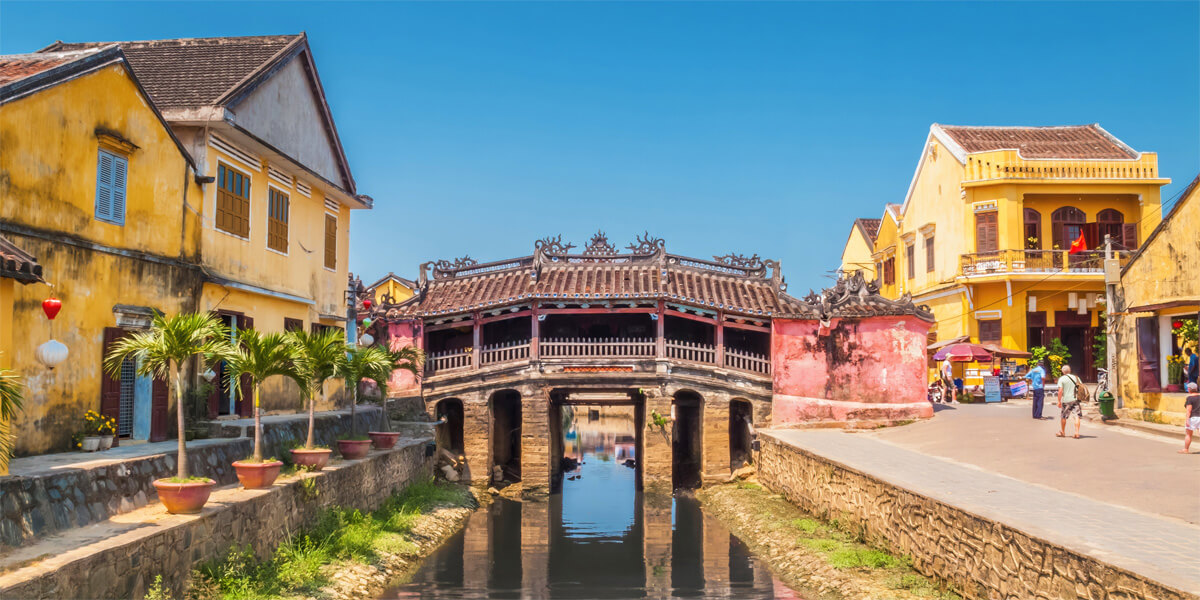A Travel Guide to Hoi An
Hoi An, the epitome of charm! Undoubtedly, Hoi An stands as one of Vietnam's most picturesque towns with its enchanting yellow-walled houses, streets illuminated by lanterns, and a culinary scene boasting some of the most delectable dishes in the country, it's no wonder that visitors to Vietnam often fall head over heels at first sight.
Hoi An, the epitome of charm! Undoubtedly, Hoi An stands as one of Vietnam's most picturesque towns with its enchanting yellow-walled houses, streets illuminated by lanterns, and a culinary scene boasting some of the most delectable dishes in the country, it's no wonder that visitors to Vietnam often fall head over heels at first sight.
Hoi An: A Quick Overview
Hoi An, a petite city situated approximately 45 minutes south of Da Nang in central Vietnam, holds a rich historical legacy. Once a thriving port city teeming with merchants from across Asia and Europe, its vibrant past is still palpable in the intricate ancient architecture that graces its streets. Despite its transformation into a bustling tourist destination, Hoi An retains remnants of its diverse cultural influences.
Visitors are drawn to Hoi An for myriad reasons, from indulging in bespoke creations at the numerous tailor shops to witnessing the mesmerizing spectacle of lanterns illuminating the quaint yellow thoroughfares. Moreover, the city's proximity to serene beaches adds to its allure, offering a perfect blend of cultural immersion and relaxation.

For optimal exploration, I recommend allocating at least two days to fully immerse yourself in the charms of Hoi An. However, if you're inclined towards indulging in day trips and immersive classes, extending your stay to around five days would be ideal.
Regarding the best time to visit, the period from February to October marks the dry season, characterized by temperatures ranging from the mid to high 30°C. Conversely, from October to December, the monsoon season sets in, bringing with it the possibility of rainfall and occasional flooding. Due to its antiquated infrastructure and coastal location, Hoi An is susceptible to flooding during this time. Thus, it's advisable to stay informed about local news and weather updates to mitigate any potential disruptions to your travel plans.
Things to do in Hoi An
Hoi An has long-been a not-to-miss destination in Vietnam, and as such there is no shortage of things to do there.
Reaching Out Tea House
It is located in the heart of the ancient city, is a beautiful café run by staff with hearing or speech impairments. Guests are encouraged to order using sign language and enjoy the serene ambiance of the café. Profits from the café support training programs for individuals with physical disabilities, aiding them in finding employment opportunities.
Location: 131 Trần Phú st

Order tailored items
Hoi An is a bustling center for bespoke clothing, where countless shops specialize in tailor-made items ranging from suits and shoes to bags and swimwear. If you have a specific vision for an item, Hoi An is the ultimate destination in Asia for bringing it to life.

Read more: Bao An Tailor
Explore the ancient sites
Hoi An, an ancient UNESCO World Heritage site, boasts a myriad of historic houses and temples awaiting exploration, among which the Japanese Covered Bridge stands as an iconic landmark. A single ancient city ticket grants access to five of these captivating sites of your choosing.
Price: 150,000vnd/5 entrances

Learn to cook
Hoi An boasts Vietnam's finest array of culinary schools, many nestled amidst picturesque rice and tranquil coconut forests. Don't miss out on the chance to hone your cooking skills in this enchanting setting.
Price: Around 800,000vnd

How to get to Hoi An
Getting to Hoi An is a breeze due to its robust transportation network, given its status as one of Vietnam's premier destinations. Opting for the bus proves to be the most economical and efficient choice, especially since the closest train station and airport are located in Da Nang. However, if you're traveling to or from Hue in the north, I highly recommend arranging a motorbike transfer. The journey along the iconic Hai Van Pass offers breathtaking scenery that shouldn't be missed.
For travelers heading to Hoi An from nearby areas, buses are readily available from surrounding towns. From the north, buses depart from Da Nang or Hue, while from the south, you can catch buses from Quy Nhon and Nha Trang.

Getting around Hoi An
The ancient area of Hoi An is designated pedestrian-only, making it ideal for leisurely exploration on foot. Bicycles are also a favored mode of transportation, with numerous hotels providing complimentary bikes. If your lodging doesn't offer this service, rental bicycles are readily available for a nominal fee ($1-2). For those unable to navigate independently, cyclos provide a popular alternative for sightseeing. To venture beyond the immediate area, Grab rides or taxis offer convenient options for travel.

Read more: Getting around in Hoi An
Reference source: So The Adventure Begins blog
Thank you for reading





